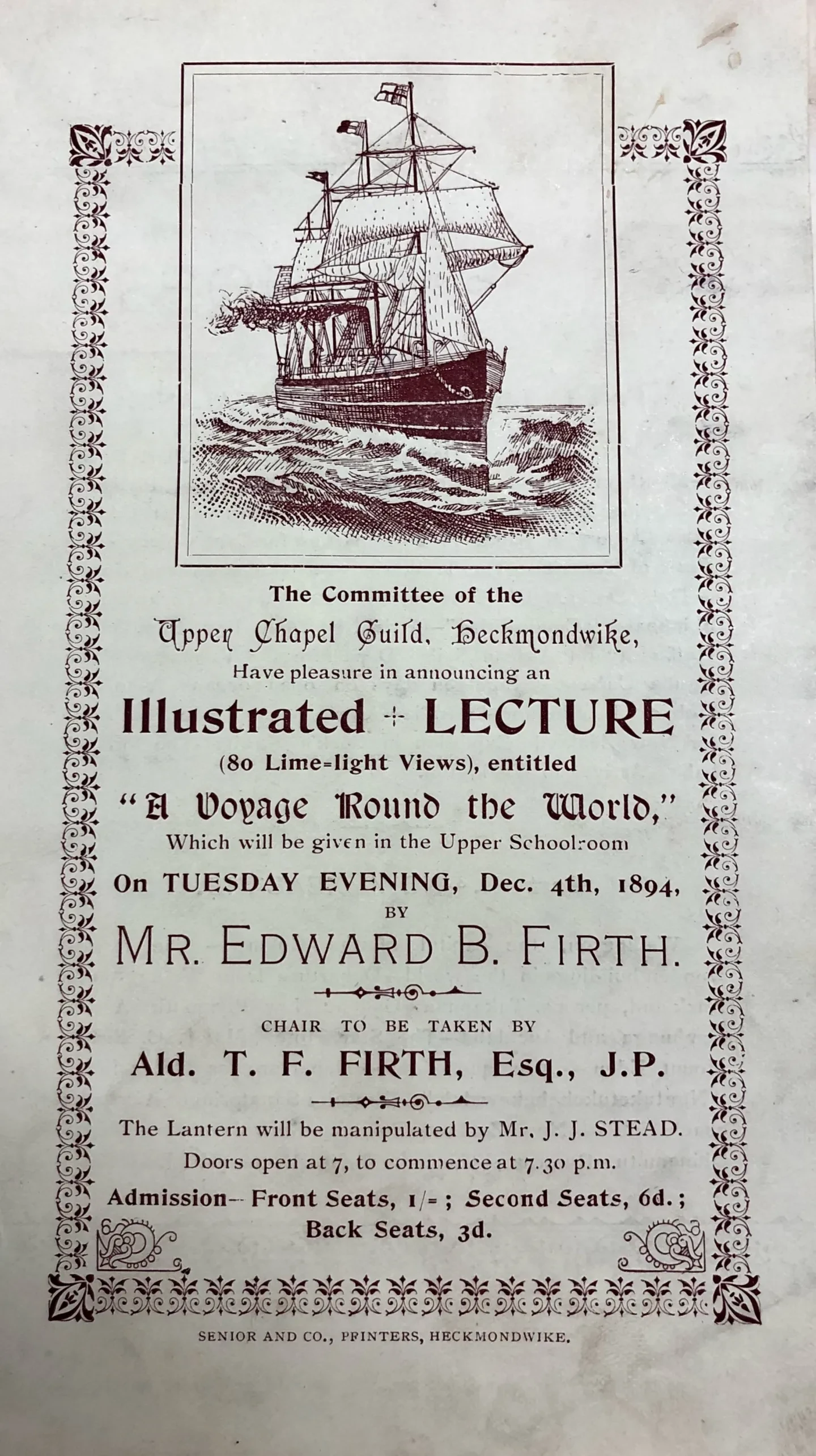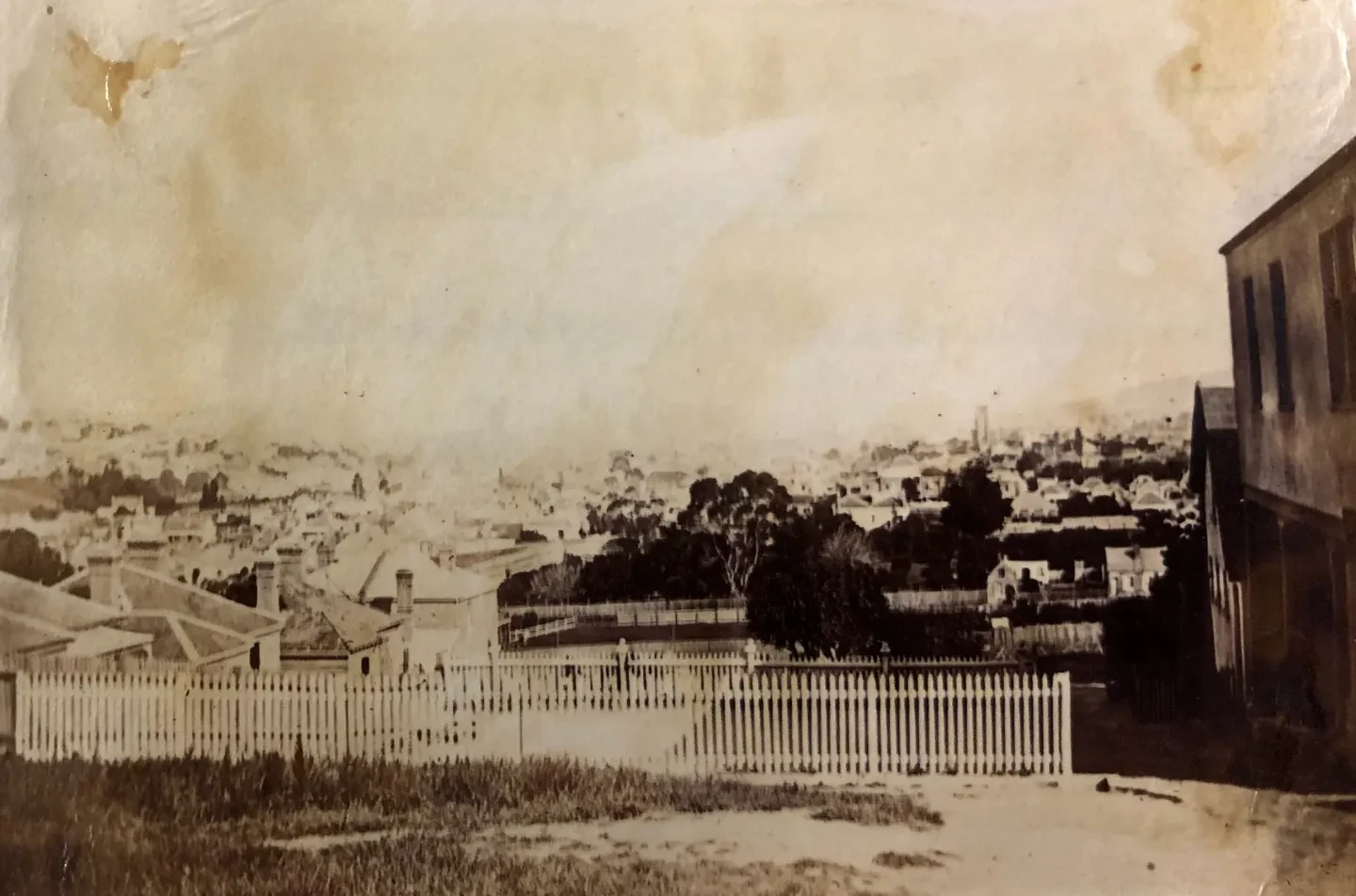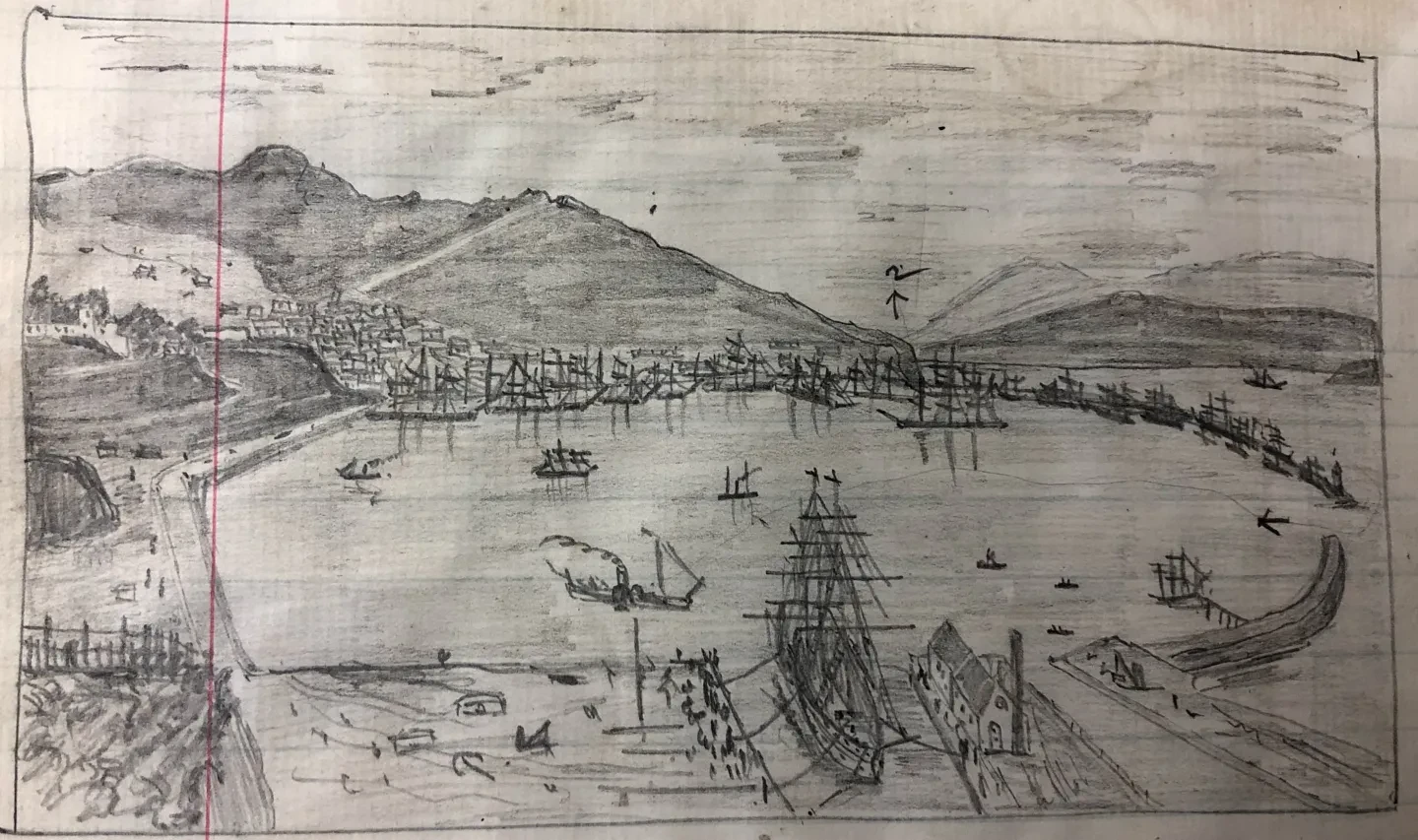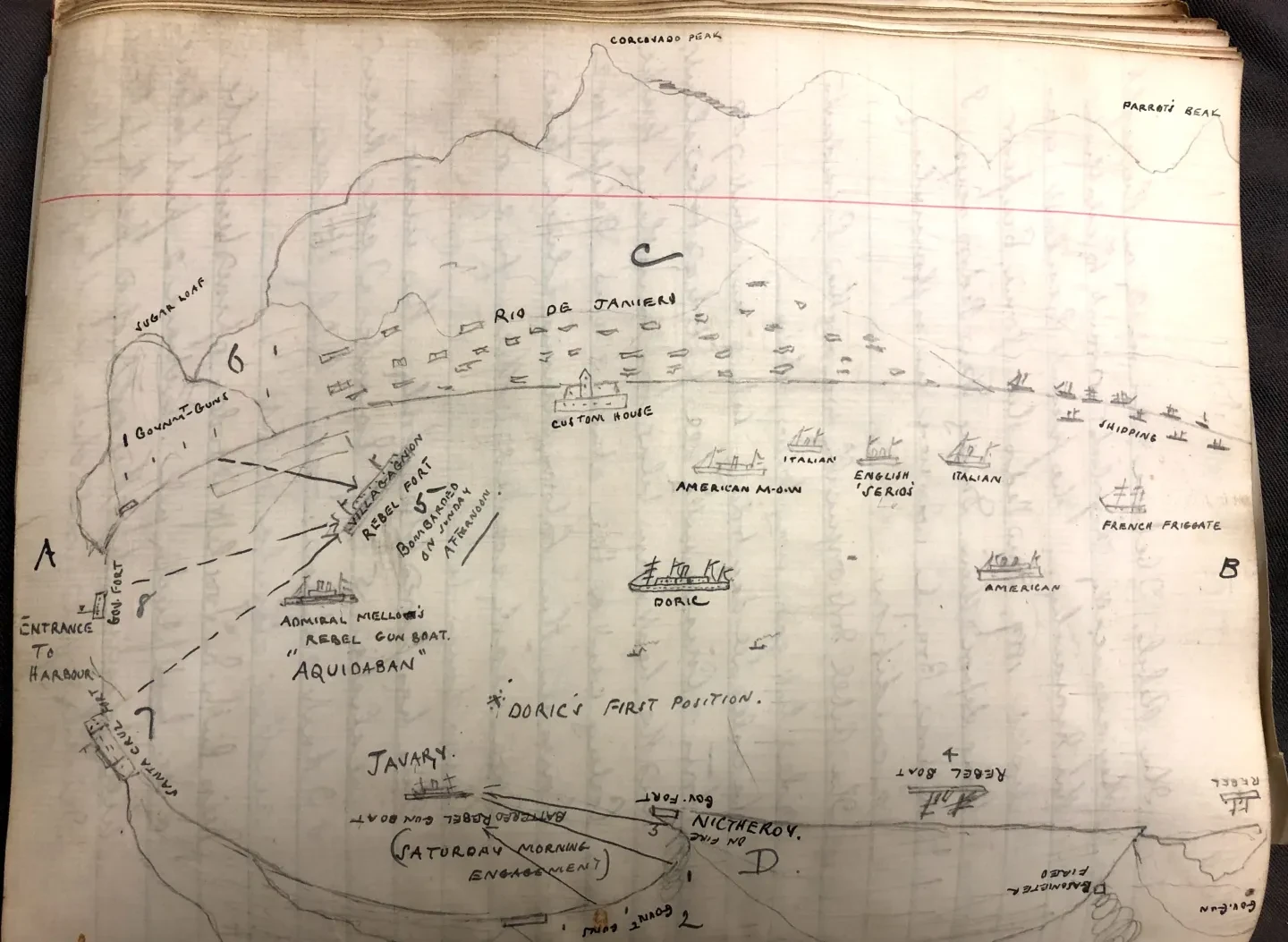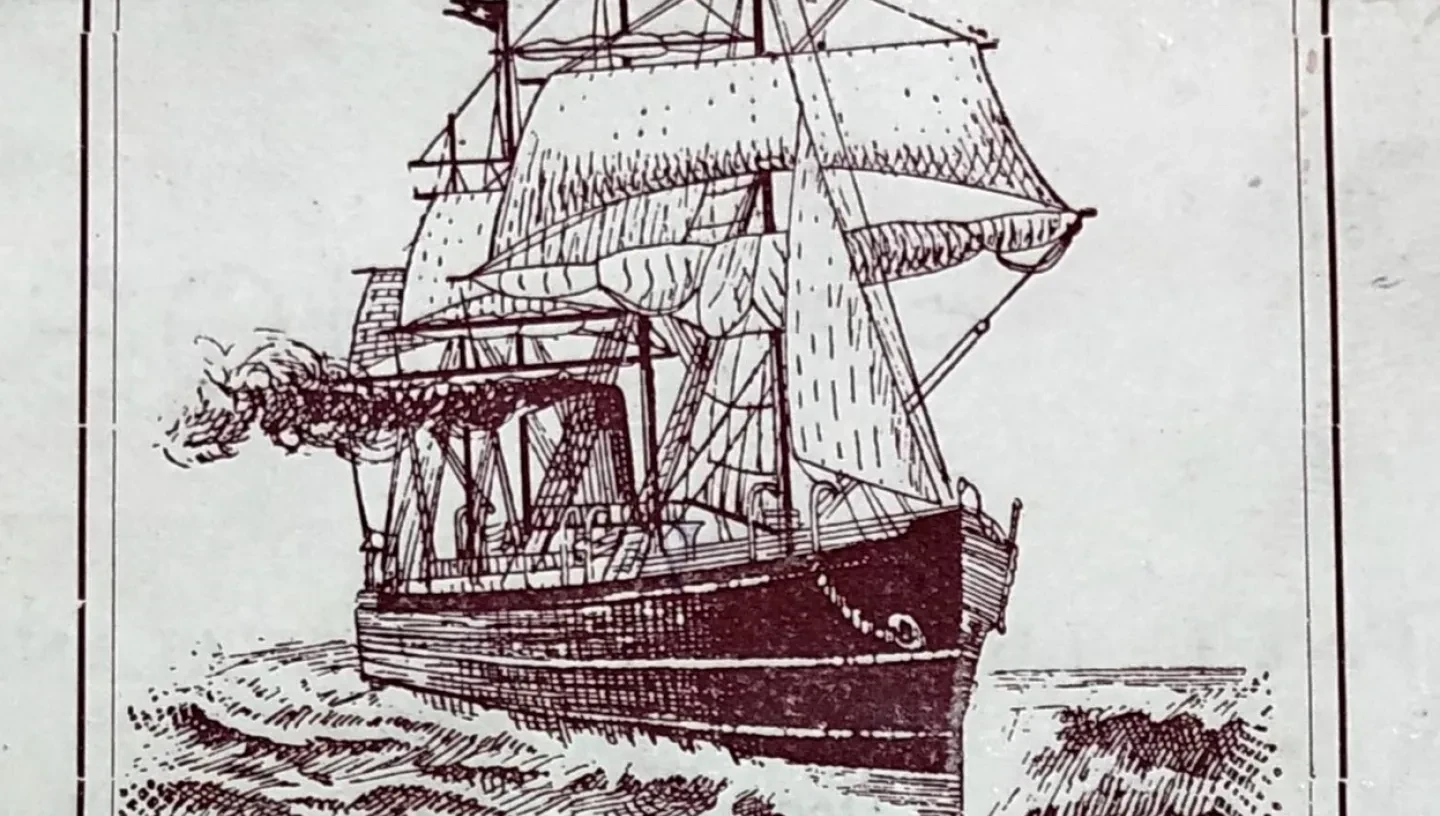
Last year has been a strange one for staff of the Caird Library as it has been for everyone. One of many things I have been missing from ‘normal’ life is the privilege of being able to travel and explore the world. Luckily for me, I can access the stories and images contained in our vast collection of travel journals to fill the void! I have chosen just one to share with you this month, written by a man who covered lots of ground…
The Caird Library holds a vast array of personal papers which contain the voices of many thousands of individuals. Our collection of journals and diaries number over 350 individual items and contain recollections which range from witnessing notable Naval battles to personal relationships. One of the most broadly covered subjects in this collection, however, are journals kept by individuals whilst they travelled.
Until the arrival of the jet engine, travelling could be a long and arduous experience. Many travellers decided to fill the hours spent on road, rail or sea by recording their thoughts and observations of their journeys. Today, with a journey to the other side of the world from the UK taking around 26 hours by air, these recollections form part of a way of life which has largely been forgotten by many.
A thruppence for an adventure round the world
Newly-engaged with this topic as a result of my own reduced travel opportunities in 2020, I was drawn to investigate a travel journal written up by one Edward B. Firth (RMG reference: JOD/203), who embarked the SS Doric on a voyage round the world in August 1893, calling at locations such as Tenerife, South Africa, and Australia before arriving in New Zealand for a longer stay and homeward journey via Brazil, a journey taking five months in all.
On his return to his hometown of Heckmondwike in West Yorkshire, Firth presented a lecture of the account of his adventures to a local meeting of the Upper Chapel Guild with accompanying slides. Was the tale of his travels so gripping as to justify charging the public a minimum of thruppence for a seat to hear him? I read on to find out!
The beginnings of a journey
Firth was certainly thorough in recording his journey, as he notes that he left home on the 3rd August at 4.37pm precisely in order to catch a train to Plymouth where he was to meet his ship, the Shaw Savile & Albion Line’s SS Doric.
Much of the first part of Firth’s journal is taken up with observations of his fellow first-class passengers, and he seems to be particularly excited by the discovery that Miss Nellie Stewart, a famous Australian actress, was travelling aboard incognito. This does not seem to have stopped Firth and other passengers from roping her into a number of amateur plays that were put on for their fellow passengers in the course of the first leg of their voyage however!
After a brief stop in the Canary Islands, the Doric landed in Cape Town, where Firth logs the vital statistics of the settlement (population elevation, etc). This sets a pattern that Firth keeps throughout his journal, of logging the general facts and populations of all of the major stops.
In addition to photographs pasted into the journal, this helps to create the image of the Colonial settlements that he was encountering. All of the stops the ship made are now major port cities and look very different to the world that Firth and his fellow-passengers encountered.
Land in sight
After another brief stop in Hobart, on the morning of the 19th September, 46 days after leaving home, Firth describes the vessel’s first sighting of New Zealand,
‘On getting on deck this morning we set eyes on New Zealand. The North Coast of the South Island. Beautiful upper peaks, some snowclad. Exceedingly fine to look at.’ (JOD/203).
Although clearly excited to be at their ultimate destination, Firth does express a great deal of wonder at being so far from home,
‘We are now about 13,500 miles from home, quite the other side of the world. What a terrific long way to be here…’ (JOD/203).
Encountering tourists and locals
Disembarking the Doric at Wellington, Firth and his travelling companions then set out on a cross-country trip across the two main islands of New Zealand. Firth records visiting many sites which are still major visitor attractions in New Zealand today; Mount Victoria in Wellington, Mount Eden in Auckland, the hot springs at Okoroire and Rotorua, volcanic pools at Wai-O-Tapu, and the city of Christchurch.
Firth, like many foreign tourists, spends most of his time in the company of other tourists from his own country, aside from noting when he encounters locals with links to England. He also provides commentary on his encounters with the Maori and records his exceptionally low opinions of their culture.
I found much of what he has to say on this difficult reading, especially within the context of 2020 and the movements around the world to tackle racism and inequality in society. However, it is important to acknowledge that these opinions and use of language were once not only acceptable, but the stated norm and often backed up in law. Although we in the 21st Century have a long way to go in achieving true equality for all, we can still use records like this to get some perspective on how far we have come.
A damper to the journey: revolts in Brazil
On 12th October, just over four weeks after arriving in New Zealand, Firth boards the Doric at Lyttleton harbour to begin the journey back to the UK. After some rough sea conditions, the ship arrives into Rio de Janeiro, at which point the journal takes a rather different turn. On 30th October, while out at sea, Frith notes that the ship was ‘anxiously awaiting news of Rio’ where they were next due to dock.
Reports of rioting had reached New Zealand, and it would transpire that the Doric was about to sail right into the middle of the Second Brazilian Naval Revolt. The ship had to make a necessary stop at Rio de Janeiro to refuel for the final leg of the journey home, so it is with some trepidation that the ship arrives on November 4th into harbour.
They almost immediately make contact with the British sloop HMS Beagle who guides them into harbour as close as possible to a fleet of British Gun Boats, who were stationed to protect British interests. This however, does not appear to have stopped the Doric coming dangerously close to the active conflict, as Firth records,
‘The explosion of the shells and bombs caused our boat at times to tremble, and several shells and shots missing the Rebel fell dangerously near the Doric’ (JOD/203).
Despite this, Firth and his fellow passengers are still very disappointed not to be able to go ashore! The firing carries on for another two days, which Firth records as a ‘typical 5th of November!’ before the Doric is able to pick up fuel before departure on the 6th.
Homebound
The rest of the return journey to Plymouth passes without major incident, and after a brief stop in the Canary Islands, the Doric lands in Plymouth where Firth boards various trains to arrive home on December 4th 1893 at 7.34pm precisely.
Firth certainly covered more miles and encountered experiences along the way that his peers might never have seen. He may have charged thruppence to share them when he returned, but his account of his voyage round the world is certainly worth a read in my opinion!
By Susan Gentles, Archivist
